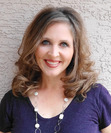Name Some Children Some Names and See What Happens
It’s freezing out there. I went running in 14 degree weather this morning. And I couldn’t find my scarf. And when my neighbor pulled up to tell me to “go inside where it’s warm,” I couldn’t respond because I’d been out there too long and all I could say was, “Hawah? Mah wips don’ wahhk.”
So glamorous.
The other day at my writers group we were discussing how to name “story people” (as Dwight Swain calls them.) There’s a fine line to walk, choosing a name that’s memorable, that fits the character, and that the author likes. It’s tough.
In the past I’ve chosen names for characters that I would’ve loved to use for an actual child born into my family, if only I could get my husband to agree to it. Or names that just struck my fancy at the moment I was writing.
I went with alliterative names for a while–both the first and last name starting with the same letter. After all, that’s how I remembered my husband’s name when I first met him.
Then, one day when I was reading a John Grisham novel, I noticed that he named his characters all real names, but out of the ordinary names. They were names you could find in the phone book, but that even in a city there might only be one or two entries with that last name.
That hit me as being a key–a real name (not made up) but that would stand out as unusual.
So, since then I’ve pulled out the phone book and selected names that way.
Another thing I have done is jot down interesting names as I come across them while reading magazines, especially auto magazines. For instance, lately I found the name , who was the 1970 Indy Car winner. Great name! It’s a real name, but just unusual enough that it’s memorable. Other magazines have been helpful. I just happen to read a lot of car magazines.
One other way I’ve found names is to do research. If I were writing about, say, a cooking school, I might find a list of the top chefs or innovative cooks of all time and then mix and match first and last names from that list to populate my story, assuming they have interesting names.
In my work in progress, I have a character that comes across as likable but that I am hoping the readers will take a dislike to, so I gave him the last name Dirkburg and I have the heroine refer to him as “dirtbag.” A sound-alike can sometimes be useful. Ben Franklin called himself “Silence Dogood,” and Dickens very often used names that were meant to invoke emotion in the readers. In my short story I named the semi-hero “Mr. Thurgood,” since I didn’t have as much time for character development in this short story and had to do something to make him seem good from the get-go.
There’s that great poem by Robert Frost, as well, “Maple.” The girl in the poem has the name Maple instead of the more common Mabel, and it brings her some difficuly socially, but then it ends well when it catches the attention of the right man. Frost closes it, “Name some children some names and see what happens.” I’m not recommending that we hobble our kids with wacky names, but since we can always name story people, go big and let’s see what happens.



